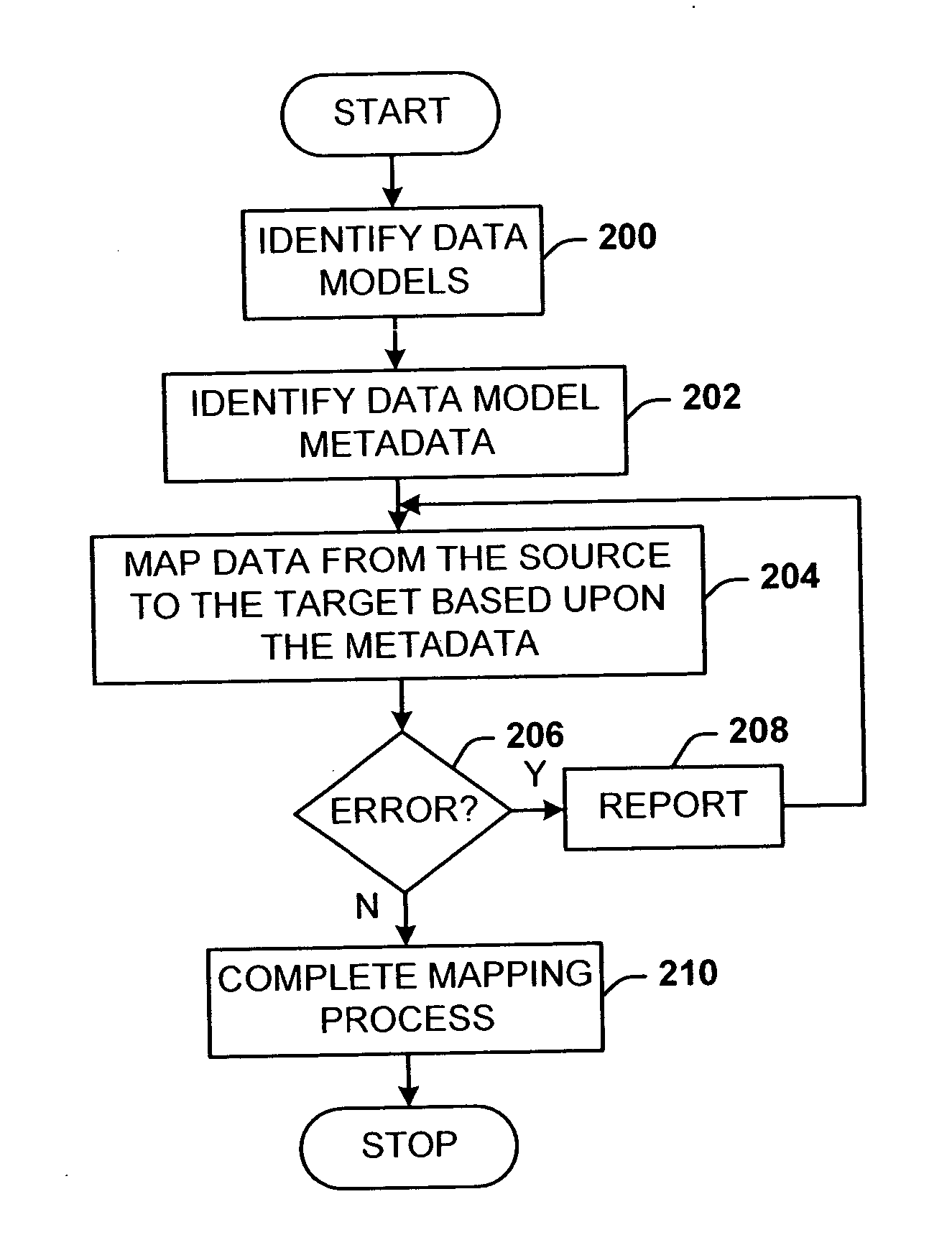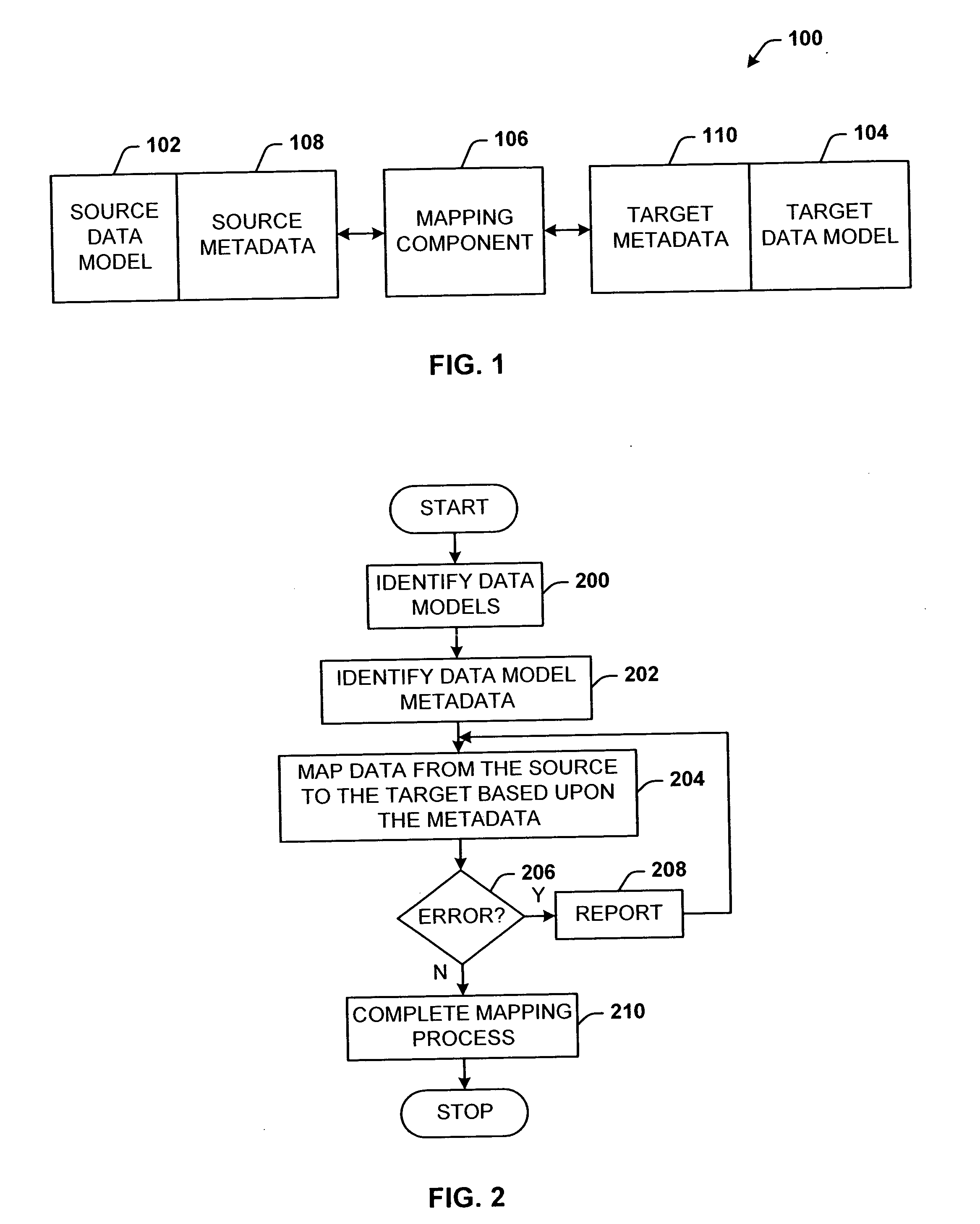Mapping architecture for arbitrary data models
- Summary
- Abstract
- Description
- Claims
- Application Information
AI Technical Summary
Benefits of technology
Problems solved by technology
Method used
Image
Examples
example
Use of BasedOnRelationship in XML Case
Tables:
Employee (EID, FirstName, LastName, HireDate, Salary, Manager)
FiredEmployee (EID, FirstName, LastName, HireDate, Salary, Manager)
Sample of result in XML:
<AllEmployees><GoodEmployee EID=“1” FirstName=“Good” LastName=“Emp”HireDate=“1 / 1 / 2003” Salary=“1,000,000$” / ><BadEmployee EID=“2” FirstName=“Bad” LastName=“Emp”HireDate=“10 / 10 / 2000” Salary=“10$” / >< / AllEmployees>
Mapping:
<m:Map Name=“GoodEmployeeMap” Source=“Employee”Target=“AllEmployees / GoodEmployee”><m:FieldMap SourceField=“EID” TargetField=“EID” / ><m:FieldMap SourceField=“FirstName” TargetField=“FirstName” / ><m:FieldMap SourceField=“LastName” TargetField=“LastName” / ><m:FieldMap SourceField=“HireDate” TargetField=“HireDate” / ><m:FieldMap SourceField=“Salary” TargetField=“Salary” / >< / m:Map><m:Map Source=“FiredEmployee” Target=“AllEmployees / LazyEmployee”BasedOnMap=“GoodEmployeeMap”>< / m:Map>
Actual Map as it is create...
examples
<Map Source=“Customers” Target=“Cust” UseForConcurrency=“Modified”><FieldMap SourceField=“cid” TargetField=“CustomerID” / ><FieldMap SourceField=“street” TargetField=“st”UseForConcurrency=“Never” / ><FieldMap SourceField=“zip” TargetField=“zip”UseForConcurrency=“Never” / ><FieldMap SourceField=“house” TargetField=“number”UseForConcurrency=“Never” / ><FieldMap SourceField=“firstname” TargetField=“fname”UseForConcurrency=“Always” / ><FieldMap SourceField=“lastname” TargetField=“lname”UseForConcurrency=“Always” / ><FieldMap SourceField=“status” TargetField=“status” / >< / Map>
The map is represented internally as follows:
<Map Source=“Customers” Target=“Cust”><FieldMap SourceField=“cid” TargetField=“CustomerID”UseForConcurrency=“Always”<!- Ignored from Map--> / ><FieldMap SourceField=“street” TargetField=“st”UseForConcurrency=“Never” / ><FieldMap SourceField=“zip” TargetField=“zip”UseForConcurrency=“Never” / ><FieldMap SourceField=“...
PUM
 Login to View More
Login to View More Abstract
Description
Claims
Application Information
 Login to View More
Login to View More - R&D
- Intellectual Property
- Life Sciences
- Materials
- Tech Scout
- Unparalleled Data Quality
- Higher Quality Content
- 60% Fewer Hallucinations
Browse by: Latest US Patents, China's latest patents, Technical Efficacy Thesaurus, Application Domain, Technology Topic, Popular Technical Reports.
© 2025 PatSnap. All rights reserved.Legal|Privacy policy|Modern Slavery Act Transparency Statement|Sitemap|About US| Contact US: help@patsnap.com



